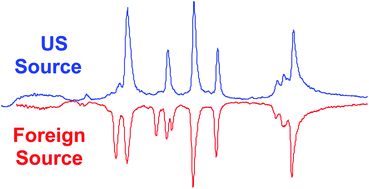Structural comparison of two anti-CD20 monoclonal antibody drug products using middle-down mass spectrometry
Abstract

* Corresponding authors
a
Division of Pharmaceutical Research, Office of Testing and Research, Center for Drug Evaluation and Research, U.S. Food and Drug Administration, 1114 Market Street, Room 1002, Saint Louis, MO 63101, USA
E-mail:
Michael.Boyne@fda.hhs.gov
Tel: +1-301-796-0113

 Please wait while we load your content...
Something went wrong. Try again?
Please wait while we load your content...
Something went wrong. Try again?
B. Wang, A. C. Gucinski, D. A. Keire, L. F. Buhse and M. T. Boyne II, Analyst, 2013, 138, 3058 DOI: 10.1039/C3AN36524G
To request permission to reproduce material from this article, please go to the Copyright Clearance Center request page.
If you are an author contributing to an RSC publication, you do not need to request permission provided correct acknowledgement is given.
If you are the author of this article, you do not need to request permission to reproduce figures and diagrams provided correct acknowledgement is given. If you want to reproduce the whole article in a third-party publication (excluding your thesis/dissertation for which permission is not required) please go to the Copyright Clearance Center request page.
Read more about how to correctly acknowledge RSC content.
 Fetching data from CrossRef.
Fetching data from CrossRef.
This may take some time to load.
Loading related content
